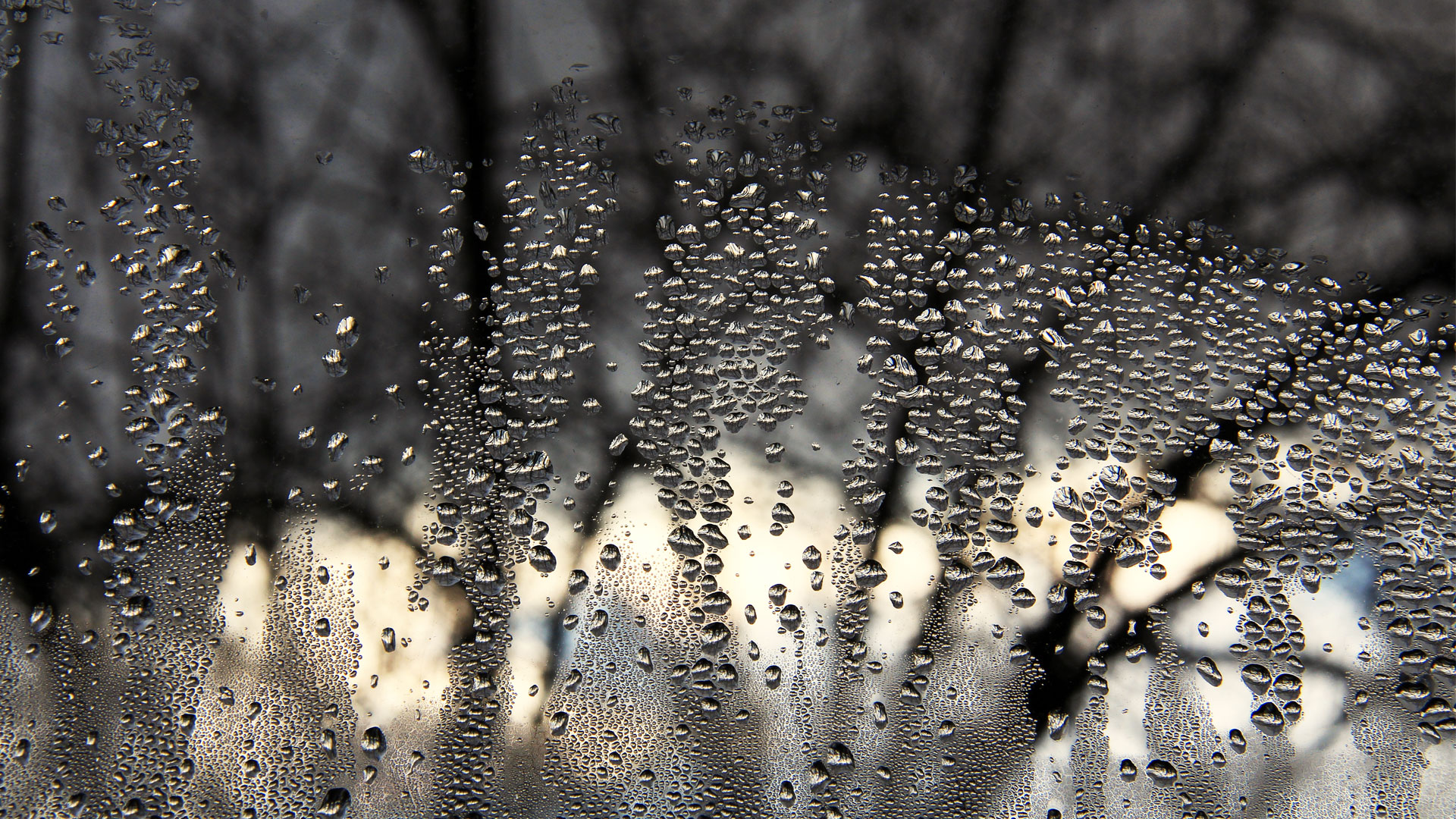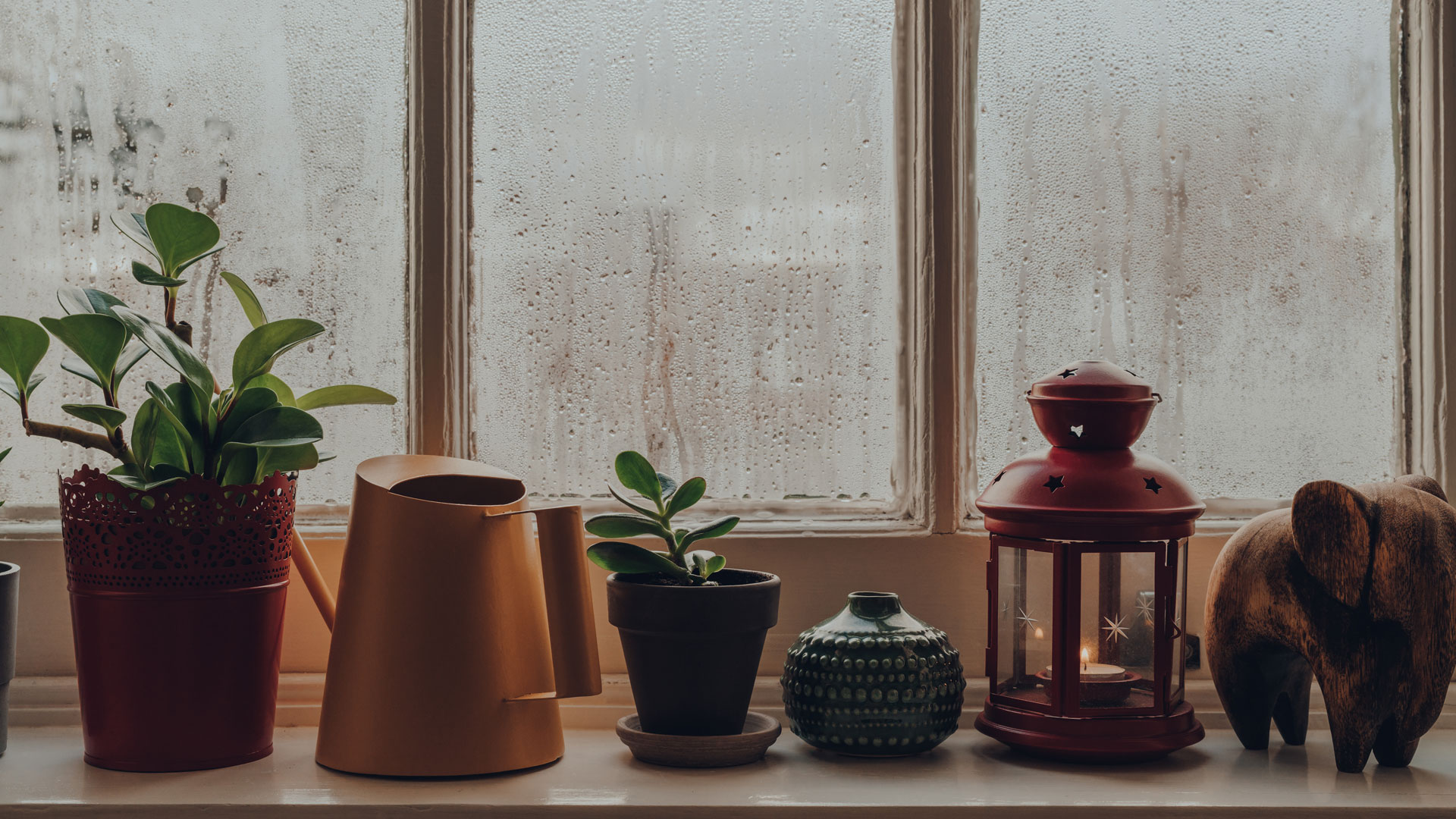How does condensation happen?
Have you been wondering 'how does condensation happen?' We're giving you the low-down.

How does condensation happen? Condensation is the process of water vapor turning back into liquid water. USGS explains that condensation is crucial to the water cycle because it's how clouds are formed. But you don't just have to look to the skies to see this natural marvel happening. The process of condensation can happen at any time of the year and it can occur inside as well as outside of your home. Whether it's water droplets forming on your car, or on the inside of your windows or in your bathroom, condensation can be an everyday occurrence.
According to the World Health Organisation (WHO), an estimated 10-50% of the indoor environments where we live, work and play, are damp. So if you're wondering how does condensation happen, what's the difference between condensation inside and outside your windows and what can you do about it, Live Science has all the answers.
Related: Best dehumidifiers
What causes condensation?
According to National Geographic, condensation is the opposite of evaporation and is the process where water vapor in the air becomes a liquid. It can happen in one of two ways. For condensation to form, water vapor is either cooled to its dew point – which is the temperature at which water in the air condenses to create water droplets. Or, the air becomes so saturated with water vapor that it can't hold any more water.
Condensation can occur on pretty much any surface, whether it's on the inside or outside of your windows, on drink cans or on your shower screen. When condensation happens inside your home, there are three main factors that contribute to the formation of water droplets.
These include:
- The humidity of indoor air – As we touched on before, condensation forms when the inside air can’t hold the level of moisture
- Low temperature – The humid air comes into contact with cold indoor surfaces
- Poor ventilation – If there is nowhere for the hot and cold air to go, the humidity accumulates indoors and leads to increased condensation
This is why, as Tim Carroll, from the U.S. Environment Protection Agency (EPA) told Live Science: "It is important to ventilate moisture out of the home while cooking or showering and to control other more naturally occurring sources of moisture through ventilation, heating, air conditioning, or supplemental dehumidification".
Get the world’s most fascinating discoveries delivered straight to your inbox.

The difference between condensation inside and outside your windows
When you see water droplets outside your windows, this is called dew. As stated by National Geographic, dew is the moisture that forms as the result of condensation, therefore it is the end result of water vapor changing to liquid form. Dew only occurs when temperatures drop and objects cool down. Unlike hot air, colder air is less able to hold water vapor, which forces the gaseous water around cool objects to condense. Temperatures reach the dew point most usually at night – and especially during summer when warm days are followed by cool nights. This is why you might see water droplets outside your windows, on your lawn, or on your car in the morning.
This type of condensation happens when humidity levels are high and when the exterior surface temperature falls below the dew point.
But it's not just during the summer months, dew can occur.
• Related: Dehumidifiers on sale
As Carroll told Live Science: "Condensation can form on windows, and other surfaces, at any time of the year. In the winter, condensation often builds up on the windows because the outside air temperature is much lower than indoors. Windows can have very little resistance to heat flow, so even the interior side of most windows will be closer to the outdoor temperature than the indoor temperature. During the summer, the outside of a window can be cool from the air conditioning inside, so water vapor can condense on the exterior side of windows on a hot, humid day."
But don't worry – dew on the exterior of your windows doesn't mean they are faulty or malfunctioning. In fact, according to US-based window experts, Andersen Windows & Doors, it means the outside pane is 'thoroughly insulated from the heat indoors.'
If you have noticed droplets on your glass, head to our feature answering; is condensation on windows bad?
What to do about condensation between window panes
If you're plagued with condensation between your window panes, it might be a sign of damage to the window components and is most often caused by the failure of the seal between those panes. As well as looking aesthetically unappealing, it can cause wider issues – like mold – if it's not dealt with.
As Carroll explained: "The failed gasket will allow the dry and inert gas filling the space between panes to escape. This will be replaced naturally by air containing moisture from either inside or outside the home. This is normally nothing more than a cosmetic issue, but it could lead to mold growth between the panes."
To get rid of any condensation between window panes, quick fixes include:
For more permanent fixes, the best solution is to call in a professional to get to the bottom of the problem once and for all. It could be a simple case of changing the seal, updating the glazing or installing a new window. While the latter might seem costly, it will save you from any potential mold growth issues later down the line.
Becks is a freelance journalist and writer writing for a range of titles including Stylist, The Independent and LiveScience covering lifestyle topics such as health and fitness, homes and food. She also ghostwrites for a number of Physiotherapists and Osteopaths. When she’s not reading or writing, you’ll find her in the gym, learning new techniques and perfecting her form.



